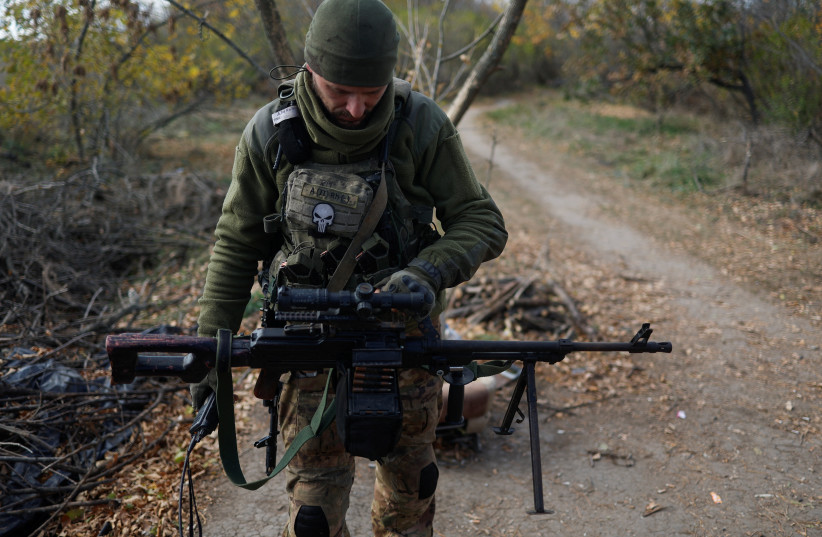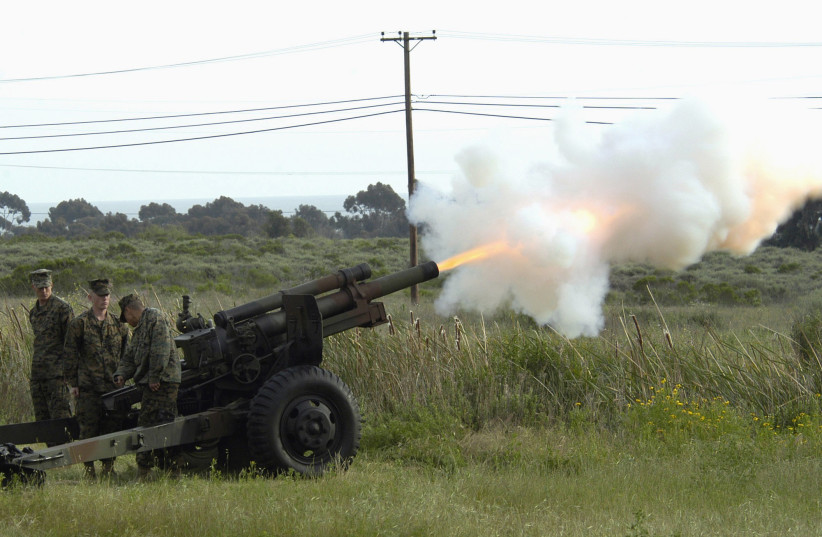Since Russia's February 2022 invasion of Ukraine, both the Russian and Ukrainian militaries have been forced to pull all their resources, even equipment dating back to World War II, in order to keep the war effort going.
The war has already seen heavy use of decades-old machinery and schematics. At least two thousand Soviet-era Russian armored vehicles have been destroyed, captured or damaged by Ukraine, according to open-source intelligence analyst Oryx. Soviet machinery that was produced in the 1960s and 70s, as well as weaponry designed during the Cold War and manufactured later, is being used on both sides in combat.
However, there are some even older weapons involved that date back to the Second World War — And even older than that.
Maxim M1910 machine gun
The Pulemyot Maxima 1910 machine gun, or M1910, was developed by Russia in the first decade of the 20th century after the nation's Maxim guns purchased from Germany and Britain came in quite handy during the 1904-5 Russo-Japanese war.
The original Maxim, the world's first fully automatic machine gun, was created in 1884 by British-American inventor Hiram Maxim. According to Encyclopedia Brittanica, the Maxim was largely responsible for World War I being dubbed “the machine gun war."
The original can't be beat
Ukraine began using the Maxim M1910 machine gun against Russia, according to a May 2022 Economist article, by choice rather than due lack of up-to-date equipment.
Per the Economist, Russian media mocked Ukraine for its use of the centenarian schematic, claiming that Ukraine was running low on modern weapons. However, although the bulky 68kg of the M1910 may look old and have a less impressive firing rate, it contains something that modern, more portable machine guns lack: a water cooling system.
Modern machine guns, which fire similar 7.62mm rounds as the modernized Maxim and carry a fraction of the weight, can overheat very quickly when firing long bursts. Excess heat will deform the barrel and can even cause the ammunition to explode prematurely, resulting in unintended firing or "cooking off." As a consequence, they can only be fired in short bursts and operators may need to carry an extra barrel to switch out in case of heat damage.

The M1910's barrel, on the other hand, is equipped with a brass water jacket that allows it to keep firing for several minutes. Also, according to the Economist, the fixed mounts of the M1910 — paired with the fact that soldiers need not worry about changing the barrel — make them easier to aim.
105 mm Howitzer M101 and D-44 85mm field artillery
Russian state media outlet TASS reported on Wednesday that Ukrainian forces used US-made M101 towed howitzers on the front lines in the Zaporizhzhia region.
Not as old as the Maxim, the M101 field howitzer was first produced in 1940 by the United States. It was the main field artillery weapon used by the US during World War II, according to the US Army website, and is capable of deploying multiple forms of ammunition, including high explosive, incendiary, armor piercing, smoke and chemical shells.

Although the US stopped producing M101s in 1953 and retired them entirely by 1989, states the US Army website, the howitzers were widely exported to dozens of non-US operators and many are still in use today worldwide.
The Ukrainian army got a recent batch of M101s from Lithuania, according to a Sept. 7 tweet from the Lithuanian Ministry of Defense.
The more the merrier
Open-source intelligence analyst Ukraine Weapons Tracker on Sunday shared video footage on Twitter of the M101 in action. The post also mentions use of D-44 guns, a Russian-made field artillery gun developed in the early 1940s.
Unlike the M1910 machine gun, there does not seem to be a distinct advantage to using World War II-era artillery weapons. Rather, it is a matter of sheer quantity; as the tweet from Ukraine Weapons Tracker explains, "more artillery is always useful."
Reduce, reuse, recycle your tanks
Non-profit Ukrainian media outlet Militarnyi reported in July that the Ukrainians employed the use of an old Russian T-34 tank during battle in the city of Lysychansk in Luhansk.
The tank was used to blockade a section of the road.
According to Militarinyi, the T-34 was installed for display in the city in 1971. Next to it, there is a stone monument carved with the names of units and formations that liberated the city of Lysychansk in World War II.
The Militarinyi article also points out that following the 2014 Russian annexation of Crimea, the tank was painted in the colors of the Ukrainian flag twice - once in November 2015 and again in July 2016. In both cases, local authorities quickly restored the tank to its original color.
As the war continues and both sides bring out old weapons from storage and retirement, more fascinating relics will likely be documented in combat.
